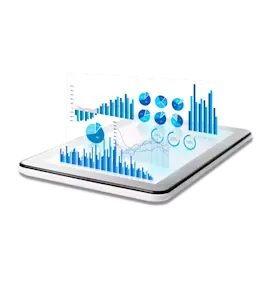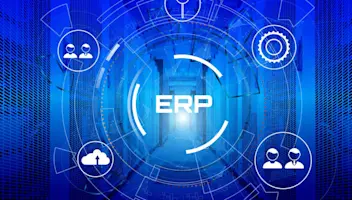Featured in this post
The ERP Implementation Journey: From Selection to Go-Live, Part 1
The ERP Implementation Journey: From Selection to Go-Live, Part 1
Mar 25, 2024
Aptean Staff Writer
As the core solution for overall operational excellence in successful food and beverage companies, enterprise resource planning (ERP) software acts as the unified digital platform of modern businesses.
Implementing ERP is a complex process involving several stages. This kind of digital transformation requires significant investment, collaborative effort and time. And beyond that, achieving success requires meticulous planning and the prioritization of key milestones.
In this recap of our webinar entitled The ERP Journey: Keys for a Successful Implementation, from Selection to Go-Live, we explore the insights shared by Jack Payne, Vice President, Product Management & Solutions Consulting for food and beverage at Aptean, and Yorck Haase, IT director at R.L. Schreiber, a renowned manufacturer of the finest herbs, spices and gravies.
With the best practices in mind, the two experts discussed tips and tricks for food and beverage companies to achieve a successful ERP implementation, from selecting a vendor to going live. This first installment of our two-part recap blog series discusses the need for ERP, the crucial step of achieving stakeholder buy-in, and the importance of software evaluations and choosing an industry-specific vendor. Let's get started.
1. Understanding the Need for ERP
Haase suggested it’s time to look for a new solution if your current system already lacks essential functionality or cannot meet the business’s evolving needs. For example, not having an industry-specific solution—and using legacy software—are telltale signs that an organization needs ERP. Additionally, Haase mentioned that one of R.L. Schreiber’s challenges that prompted ERP implementation was not having comprehensive reporting and analytics features.
Below are the other signs a company needs a new ERP solution, according to Haase:
Current system not meeting scalability and growth requirements
Inefficient integration between various business processes
Having to do lots of manual labor
Data silos causing inefficiencies
Looking specifically at the food and beverage industry, Haase stressed that the challenges of tracking stringent regulatory requirements—which include food safety laws, traceability standards and labeling regulations—are further reasons to consider a modern ERP.
“If your current system doesn’t support that, it can create an enormous amount of additional manual labor to keep track of all these compliance efforts,” Haase said. “You also run the risk of falling short. As we all know, regulatory reporting and document needs are constant, and a new ERP solution would definitely help in adhering to those standards better and allowing your staff that handles regulatory compliance to be more efficient at their job and not to have to do certain things at a manual level.”
As an organization, R.L. Schreiber has realized the importance of having business intelligence (BI) for reporting and analytics. This technology allows stakeholders to leverage accurate data in real time to make informed business decisions—a big game-changer for the company.
Payne estimated that about 50% of the companies he’s worked with were looking for a new ERP to support their growing needs. He noted that organizations that have grown over the past three to four years may look for a new solution when adding product lines or acquiring another factory.
And with the Food Safety Modernization Act 204 (FSMA) taking effect on January 20, 2026, Payne emphasized the importance of having a solution with traceability, recall and record-keeping functionalities. The new regulations will apply to businesses that manufacture, process, pack or hold foods on the food traceability list (FTL).
“A new ERP solution with robust integration capabilities can streamline operations, enhance data visibility and facilitate a seamless information flow across different departments and functions. That’s what you really want to have.”
2. Stakeholder Buy-In: A Crucial Step
Haase made the point that it’s essential to have a thorough needs analysis to convince stakeholders, ensuring they’re on the same page in terms of long-term business goals. He advised that those presenting a business case for an ERP should document all functional and technical requirements with the help of subject matter experts.
"You’ve got to have stakeholder buy-in. It has to align with your business needs. You need to clearly articulate your goals, your objectives. What are your pain points? What are your challenges?” Haase said. “If you have business processes already documented, fantastic—you’re already ahead of the game. If not, you can try, but it’s kind of flying by the seat of your pants.”
Haase preferred highlighting the tangible benefits of ERP instead of those that are less apparent when collaborating with stakeholders during the evaluation process, as that enabled him to show what the organization stood to achieve.
When internal disagreements arise, Haase recommends understanding the concerns and reservations of those not in favor of the proposed ERP.
“Schedule meetings or discussions, get these people together—listen actively and empathetically to their viewpoints,” Haase said. “Do not be dismissive, because that will create some resentment there. You want to make sure that they feel like they’re part of the process and that their opinions and request needs matter—that’s really crucial.”
Haase advised addressing concerns openly and creating an open environment that allows stakeholders to share their opinions—ensuring everyone’s involved in the process.
3. Evaluating ERP Solutions
Making sure one has a full grasp of everything that needs to be covered is the key to the evaluation process, according to the project management-certified Haase. When compiling comprehensive requirements, it’s essential to consider all factors and leave nothing out. Consider the following must-have features and capabilities in a food industry ERP:
Inventory management – optimize stock levels and streamline supply chain management
Production planning – elevate efficiency to achieve timely, high-quality output
Quality control – ensure unparalleled product excellence
Regulatory compliance – navigate regulations, safeguarding operations and promoting compliance
Financial management – empower strategic decisions with comprehensive tools
Reporting – gain valuable insights, facilitating data-driven decision-making
Integrations – connect solutions to create a seamless digital ecosystem
User-friendliness – leverage an intuitive interface for enhanced user productivity and experience
Also, while it’s not strictly part of the evaluation process, this is the stage when you should build a project team and assign key roles and responsibilities to each member. The group should include high-level executives in the organization, as well as key stakeholders from operations, finance and procurement.
Haase also emphasized the importance of involving subject matter experts and documenting the diverse perspectives each team member could provide.
“Having the right people on the project team is critical,” Haase said. “The worst thing you can do is start the project and miss so many things because the person who really should’ve been there, and could’ve told you what exactly is needed, wasn’t there.”
“Always allow for questions. Sometimes, when you allow them to clarify what their concerns are, you discover that the ‘issue’ that’s at hand is really not an issue—it’s just a stumbling block, maybe a misunderstanding or just something that’s not discussed or shown.”
4. Partnering With an Industry-Specific Solutions Vendor
The next step is to start engaging with ERP providers. Haase recommends partnering with a solutions provider that specializes in software for the food manufacturing industry, such as Aptean.
“When you go with vendors who are not in the industry, chances are they may not understand a lot of the things that you need,” Haase said. “So, you want folks that have industry experience, product functionality, scalability and the functionality you need within the system to meet your goals and objectives.”
Completing a request for proposal (RFP) could also help companies further narrow down their list of potential ERP vendors. Information such as company profile, project scope, functionality requirements, technical specs, implementation timeline, budget, support and an estimated return on investment (ROI) is important in selecting the right provider.
“Do they have solutions for what you’re looking for, or would it require customizations?” Haase asked. “That’s important—because if you have to do customizations, that can be an additional cost component that you might be overlooking.”
Payne and Haase both agreed “word of mouth” is also an important factor when choosing ERP. Companies may consider getting information and opinions from industry peers who have experience with ERP software.
Having chosen a flexible cloud deployment with Aptean, Haase believes it’s a tremendous asset to have a provider monitoring for cyber threats and cyberattacks, ensuring their environment stays up and regularly backed up if something happens. He advised companies to consider moving to the cloud to keep up with the trends.
"I personally feel that almost everything at this point is moving towards the cloud, whether it’s private or public cloud,” Haase said.
Ready to Future-Proof Your Food Manufacturing Business?
The insights provided by Payne and Haase in our recent webinar can help organizations figure out if it’s time to implement a new solution. They also offered great tips on how to convince stakeholders of the value of ERP and potentially resolve any disagreements that may arise, as well as how to evaluate ERP solutions and select a vendor.
Stay tuned for the second part of this webinar recap. In the latter half of the webinar, Payne and Haase discussed planning, timeline and what to expect during the implementation process until going live with a new system, so we’ll be covering all that in an upcoming post.
Finally, if you’re considering implementing an ERP for your business, you should know that at Aptean, we’re committed to providing robust ERP software available in the cloud for food and beverage manufacturers, distributors and processors. Aside from our industry-specific solutions, we also have a team of professionals to help ensure you have a successful implementation.
Ready to future-proof your food and beverage manufacturing business? Reach out to our ERP experts today or schedule a personalized demo.
Related Content


Get in touch today to speak to an expert in your industry
Discover the benefits of software purpose-designed for your industry—from faster implementation to greater efficiency across your entire business.






